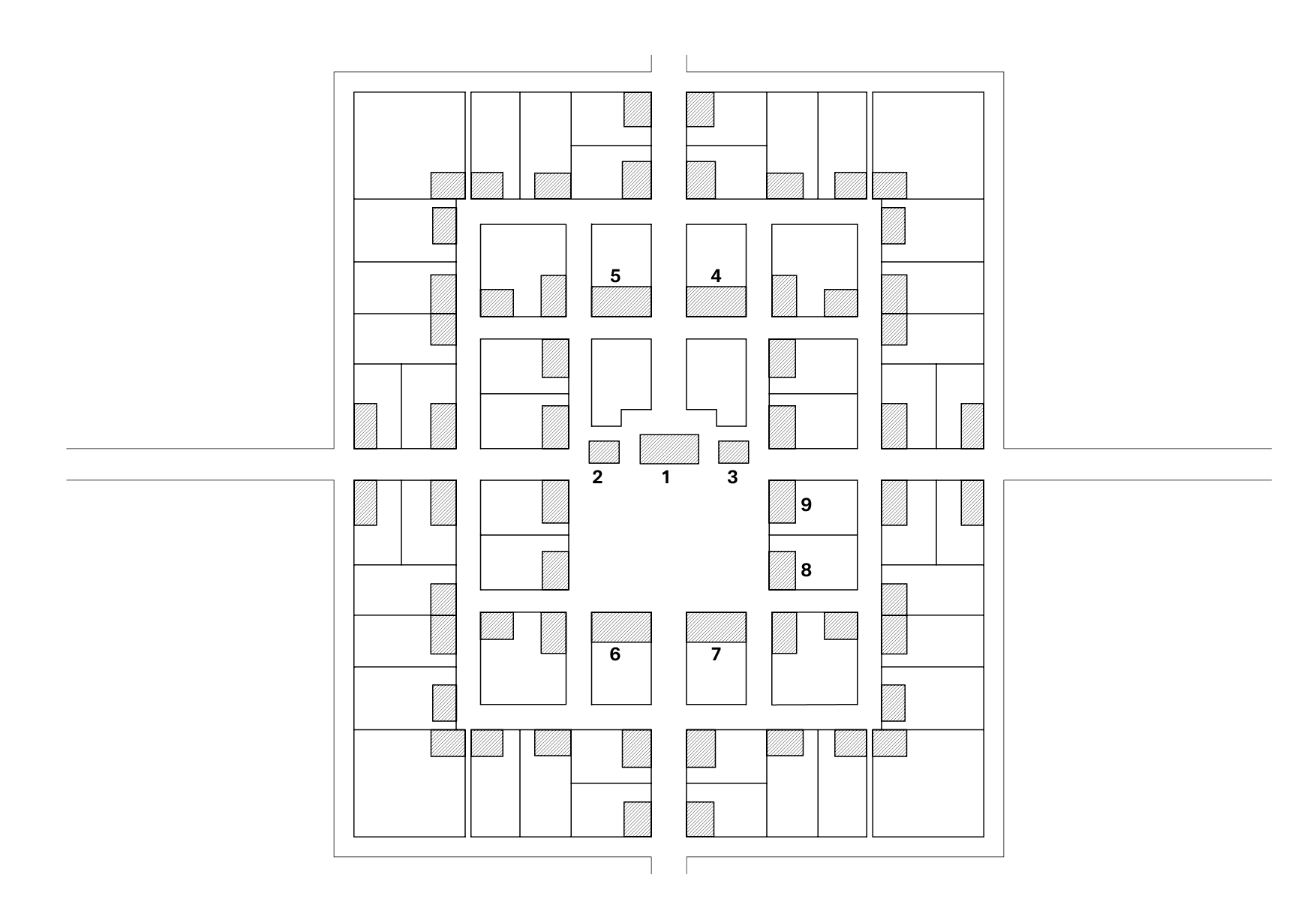Moravians
![]()
Bethlehem, Pennsylvania
Religious, Christian
Gender Segregated
Communal Property
1740 - 1880

Bethlehem, Pennsylvania
Religious, Christian
Gender Segregated
Communal Property
1740 - 1880
1 Central Meeting House 2 Residence for Female Children 3 Residence for Male Children 4 Dormitories for unmarried women 5 Dormitories for widows 6,7 Dormitories for unmarried men 8 Apothecary 9 Communal Store


Moravian society was divided by age, gender, and marital status, into groups called choirs. Married couples, widowers, widows, single men, and single women lived in separate dormitories, ran their own farms and workshops, and were socially and economically independent. Children, including infants, were divided by gender and housed separately, raised and educated by dedicated adults.
The goal of communalism and the segratory choir system was to enhance the religious and spiritual enthusiasm of the members, and to enable the missionary work. The rearing of children was a community effort, allowing women to fully participate in society/work. As the name suggests, singing and musical performance was a central task of the choirs. Moravians became famous for their music and the instruments they made.
Moravian End Notes
Lewis, Michael J. City of Refuge: Separatists and Utopian Town Planning. Princeton University Press, 2016. http://www.jstor.org/stable/j.ctt1q1xr5z.
Maurer, Joseph A., Hans-Karl Schuchard, and G. Wallace Driver. “MORAVIAN BUILDINGS IN BETHLEHEM.” Archaeology 3, no. 4 (1950): 226–32. http://www.jstor.org/stable/41662417.
Ungers, Liselotte, and Oswald Mathias Ungers. Kommunen in Der Neuen Welt: 1740-1971. Köln: Kiepenheuer & Witsch, 1972. Page 86
The use of rooms shown on the floor plan are taken from an undated drawing in the Bethlehem Moravian Archives, courtesy of the National Park Service. U.S. Department of the Interior.
Praetzel, Matthew. “Historic Moravian Bethlehem in Bethlehem, Pennsylvania, a National Historic Landmark District.” Historic Bethlehem Museums & Sites, February 26, 2014. https://historicbethlehem.org/about-draft/historic-moravian-bethlehem-a-national-historic-landmark-district/.